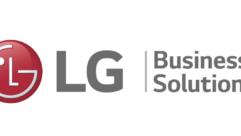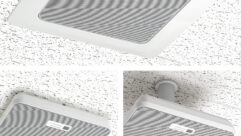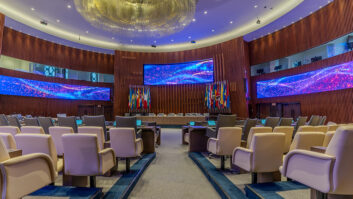
Focus on Hospitality: Technology Updates Help Guests Stay Connected
Feb 1, 2008 12:00 PM,
By Jack Kontney

As technology moves forward, both leisure and business travelers will come to expect greater AV resources from the hospitality industry—from integrated room-AV systems for their entertainment to advanced telepresence systems such as the Hewlett-Packard Halo system (pictured) for business use.
The modern hospitality industry is in a constant state of flux, trying to balance the need for return on investment against rising pressure to provide the latest and greatest in functionality for clients. Generally speaking, that balancing act comes down to a need to invest wisely in equipment that will have a long life, while simultaneously providing customers with the type of modern functionality they have come to expect. These days, those expectations largely come from what travelers are using and enjoying in their own homes. Today’s consumers can be so varied in their knowledge and experience that it is often a good idea for major facilities to standardize around equipment that is as rugged and easy to use as possible.
Whether they are leisure or business travelers, guests tend to judge their accommodations by their level of familiarity. In-room amenities such as the television and clock radio need to be intuitive to use. Easy accommodation of personal-electronics gear — digital music players, laptop computers, and mobile phones — will be increasingly desirable in hospitality settings.
In recent years, we’ve seen the expectations for Internet access move from dial-up to high-speed lines. The industry responded with a rapid infrastructure upgrade, and soon Ethernet ports became ubiquitous in most major hotels. As wireless connectivity became widespread, hotels quickly incorporated Wi-Fi networks. In just a few short years, this trend has reached the point where high-speed Internet access (HSIA) is the norm at modern hotels.
With an in-place infrastructure of televisions, telephones, cable systems, and HSIA, hotels now have the potential to supply a vast array of technology and entertainment to their rooms’ occupants. The trick, from a business point of view, is to provide as much wow factor with as little added investment as possible. When you consider that hotels must multiply the cost of each new infrastructure piece by the number of rooms per hotel — and then again by the number of properties the chain operates — the economic implications of even a minor equipment upgrade are huge.
Consider that once upon a time, every major hotel chain invested heavily in telephone systems, enabling guests to access long-distance carriers from their rooms. An expensive investment, but one that reaped rewards as travelers were suddenly able to stay in touch with the folks back home. But today, guests rarely use those expensive room phones for anything more than ordering room service or requesting towels. Almost everybody has gone cellular. This technological shift is an object lesson in the difficulties the industry faces constantly: What technological improvements will tomorrow bring to the hospitality industry?
HDTV
This is one area in which the hospitality industry is poised to make a huge leap into the future, thanks to the FCC-mandated move to digital television in February 2009. Going a step further, video-on-demand (VOD) suppliers have embraced digital rights management, allowing them to leap into the fray by making a wide range of HDTV content available in hotels. When coupled with the cable and satellite industries’ race to provide HD content, it seems inevitable that hotel rooms will soon become havens of high-definition viewing. With wider availability and reduced prices for HD display units virtually ensured, it’s a safe bet that, just as hotels have incorporated high-speed Internet access over the past few years, HDTV will become the new standard in mid- and premium-level hotel chains in the relatively near future.
And, because of its need for maximum ruggedness, reliability, and longevity, it is generally believed that the hospitality industry will settle on LCD as its preferred display technology. A presentation by Chris Hartmann, managing director of HVS Technology Strategies, at the 2006 Hospitality Industry Technology Exposition and Conference in Minneapolis confirmed some of the advantages of LCD displays as their light weight and low energy consumption. As he summarized in the presentation, traditional CRT displays are the brightest, but obviously these are very heavy, and they cannot be wall-mounted. Plasma displays can have burn-in problems, and they can’t be used at high altitudes. Projection systems are the least bright, and they have the narrowest viewing angle.
Focus on Hospitality: Technology Updates Help Guests Stay Connected
Feb 1, 2008 12:00 PM,
By Jack Kontney

Advancing technology has made it possible for premium hotels to provide global business with green service through the adoption of telepresence systems such as the Cisco system shown above.
Personal Electronics
The proliferation of personal electronics has created additional demands on the industry. Business travelers are apt to have a laptop and/or a PDA with them. Digital cameras and MP3 players can nearly always be found in the suitcases of leisure travelers. And, of course, cellular phones are a given for everyone. Rather than fighting this move to personal electronics, smart hotel chains are embracing it.
One method of doing so is to allow these devices easy access to the room’s AV system. An iPod charging dock and sound system allows guests to listen to exactly the programming they prefer. This can be incorporated into a clock radio or the TV-loudspeaker system, for instance.
Similarly, a USB port can turn a laptop, digital camera, or camcorder into a video source for the room’s TV display, allowing personal DVDs or digital-video collections to be shown. All that’s needed is to smoothly integrate the physical hardware into the AV inputs of the video system and make it easily accessible to the guest.
British company Teleadapt has come out with the MediaHub, a device that allows guests to plug their own sources into the room’s TV. A passive version acts as an extension of the TV’s input jacks, while an active version senses the type of device and assigns it a channel. The device can accommodate laptops, DVD players, MP3 players, and digital cameras. This is the essence of the hospitality experience — to engage guests with functionality beyond their expectations in a form factor that is easy to understand and operate.
Hotel AV Systems
The recurring theme here is to increase ROI by making extra use of the broadband Internet access that hotels are already providing guests. Cost containment in this case is largely a matter of infrastructure. By consolidating wired infrastructure for voice and television over data cables, hotels have the potential to rejuvenate their phone networks by moving to VoIP, while gaining the ability to connect any required device to a single cable network. Generally, the first step is to incorporate VoIP in hotel-management and office systems. However, VoIP is reaching the guest-room level, as well.
Teledex is pushing into the hotel industry with its line of iPhone SIP-series VoIP phones, and Cisco Systems and NEC have also developed VoIP products for the hotel industry. The reason is that VoIP can be fully integrated into the hotel’s data network. Sound quality and reliability have been traditional issues, but with each passing year, VoIP quality improves. Some recent examples of VoIP implementation include Hotel 1000 Seattle, which uses Cisco technology installed by systems integrator Percipia, and the Hyatt Regency Hotel in Osaka, Japan, which provides wireless VoIP to its guests. Peninsula Hotels — a five-star hotel chain with properties in Hong Kong; Manila, Philippines; Bangkok, Thailand; Beijing; Tokyo; New York; Chicago; and Beverly Hills, Calif. — has also installed NEC VoIP throughout its global properties.
The use of data networks also aids in the creation of smart rooms, in which touchscreens by companies such as AMX or Crestron control all room functions — including lights and temperature — through a single control panel. These control systems can easily incorporate video and Internet access, as well as capturing customer preferences. This allows the possibility of having video, Internet, lighting, and climate control all properly preset for repeat customers at any location.
Digital Signage
As digital signage systems become less expensive and easier to program, more hotels are adopting interactive kiosks to replace wall maps and easels to direct guests to onsite event locations. Additional hospitality applications for digital signage are virtually unlimited, including check-in, restaurant reservations, and connection to outside services such as theme park admissions and airport shuttle services.

AMX MVP-7500
Telepresence
In today’s green business climate, many companies are striving to reduce business travel for face-to-face meetings. Many hotels offer teleconferencing facilities as part of their services, a practice that will become more cost-effective with the adoption of VoIP. When these trends are taken together, the next logical step for hotels located in major business centers would be to consider installing telepresence facilities.
Adoption of true telepresence systems — such as those offered by Cisco,Hewlett-Packard, and Polycom — requires a large investment in hardware and maintenance costs, so it’s not for everyone. But, for prestige hotel chains with locations in major business capitals, telepresence is a viable option. For instance, one major requirement for effective telepresence is to have identical room furnishings in all locations, something that premium hotels specialize in.
So, if people won’t be flying from China to stay in your hotel, why not have a company’s local headquarters hold its conference (and have its regional officers stay) in your facility? This is one way that the hospitality industry can capitalize on the corporate movement to reduce carbon footprints. The hotel chains themselves can gain organizational benefits such as an enhanced public image as a green operation and, in some areas, tax benefits for the adoption of environmentally friendly technology.
RFID
Radio-frequency identification devices (RFID) are coming into their own, and the hospitality industry is beginning to take notice. While most RFID solutions already in place address either room/service-access systems or inventory management — and further implementations will initially be targeted at areas such as inventory control of items including staff uniforms — the extension into AV gear is a natural evolution. With dozens of meeting rooms sharing equipment such as video projectors and portable-loudspeaker systems, the addition of RFID tags to help locate available equipment carries a positive potential for improved efficiency of client services. In fact, properly implemented, RFID technology can be incorporated into on-property room-access and cashless-payment systems for business-center and AV services.
Some recent examples of implementations of this technology include the VingCard Elsafe Signature RFID room-key system, which is currently being used in about 35,000 hotel rooms globally. Contactless Signature RFID VingCard lock systems have just been installed at the newly remodeled Plaza Hotel in New York, in fact. Another example is near-field communication-enabled cell phones, which allow guests to bypass the check-in process. The hotel sends a booking-confirmation number, room number, and encrypted room-key access code to the phone, which can then be used to unlock the room. Loyalty-program RFID cards can also be used for check-in at a kiosk. On a more basic level, RFID keys work the same way magnetic-stripe keys do, but without worries about demagnetization through wear or dirt. By extension, RFID keys can be centrally controlled to provide access to specific rooms, so hotels can provide the person running a meeting in a specified conference room from 1 p.m to 5 p.m. with room access during that time window.
Theme parks are using RFID wristbands to provide access to cash accounts, similar to credit/debit cards. Typical applications are to provide these to guests with season passes, allowing cashless payment for meals and attractions. This has obvious applications to hotels and casinos, which can issue RFID tags to event organizers ordering AV rental, catering, and similar services for on-property events.
The Precision Dynamic Smart Band system uses RFID wristbands both for secure room access and as a cashless-payment system. These are in use at Great Wolf Lodge water parks (Wisconsin Dells, Wis.; Sandusky, Ohio; Niagara Falls, N.Y.; Kansas City, Kan.; Williamsburg, Va.) and at Hyland Hills Water World in Denver. They are also used for admissions at the Texas-based South By Southwest (SXSW) music festival.
Another company doing RFID cashless-payment systems is Guest Technologies, based in Laguna Hills, Calif. It uses the RFID tag to enable location and information services, as well as cashless spending and access control. The company is also working with a number of theme parks and hotels, most recently the Fort Rapids Waterpark Resort at Holiday Inn Columbus East in Columbus, Ohio.
Conclusion
As technology moves forward and the business climate changes with it, both leisure and business travelers will come to expect greater AV resources from the hospitality industry. As the industry’s major players consider their investments for the future, existing properties will be upgraded, while new hotels will be wired for complete connectivity of virtually any digital device through a central network. The industry’s future infrastructure will most likely be data-driven; AV-equipment suppliers who are prepared to fit into that infrastructure will benefit the most.
Jack Kontney is a Sound & Video Contractor contributor and president of content-creation and marketing firm Kontney Communications, which specializes in professional AV. Contact him atwww.kontneycomm.com.










